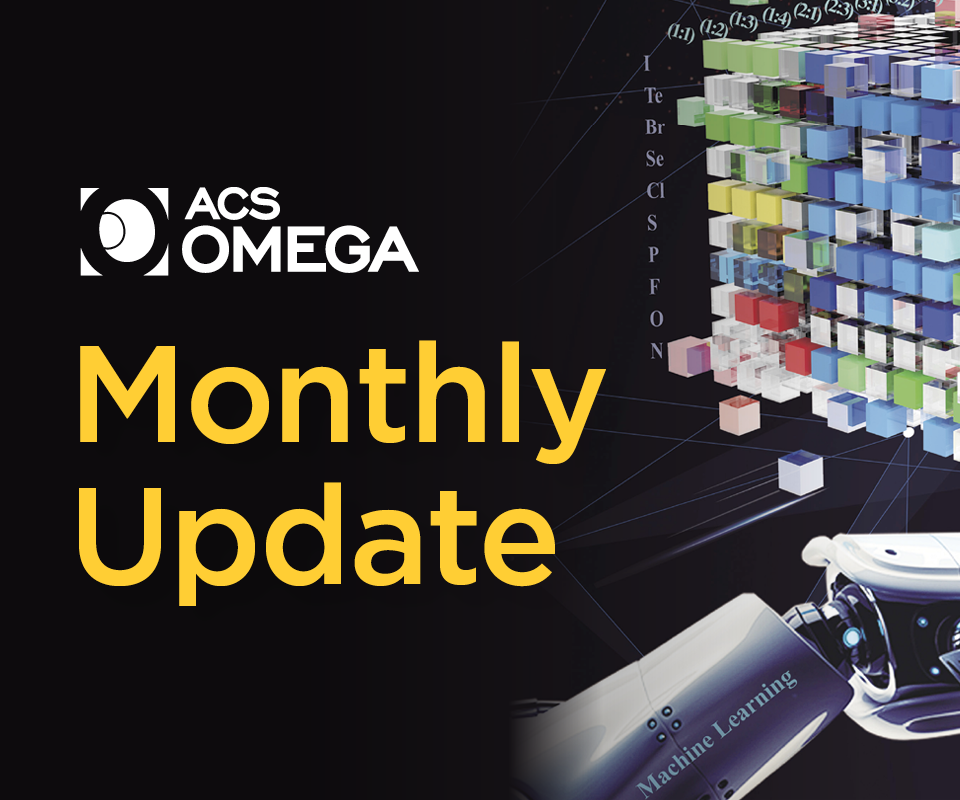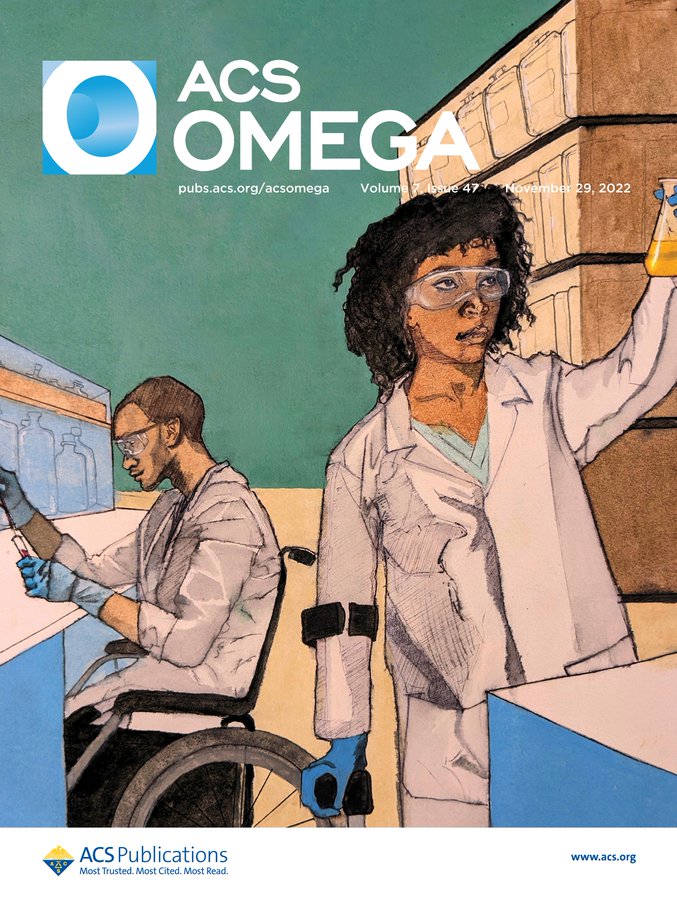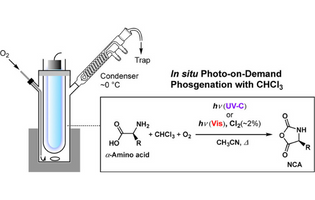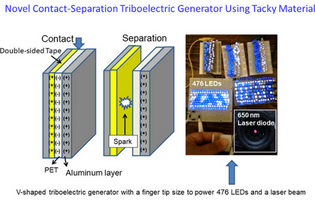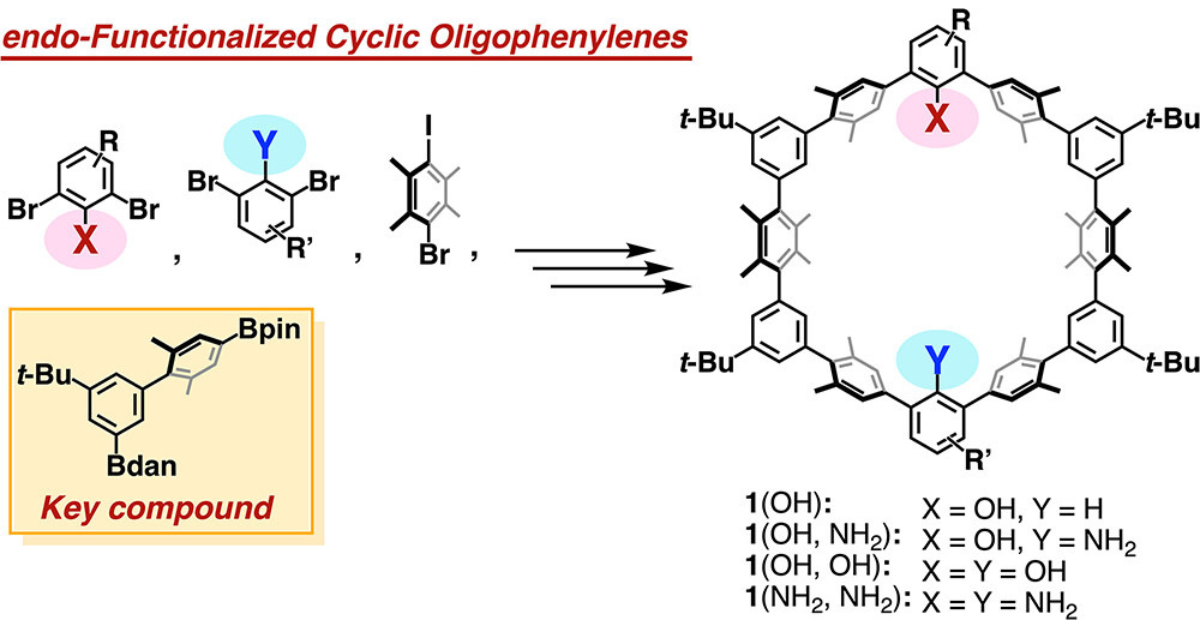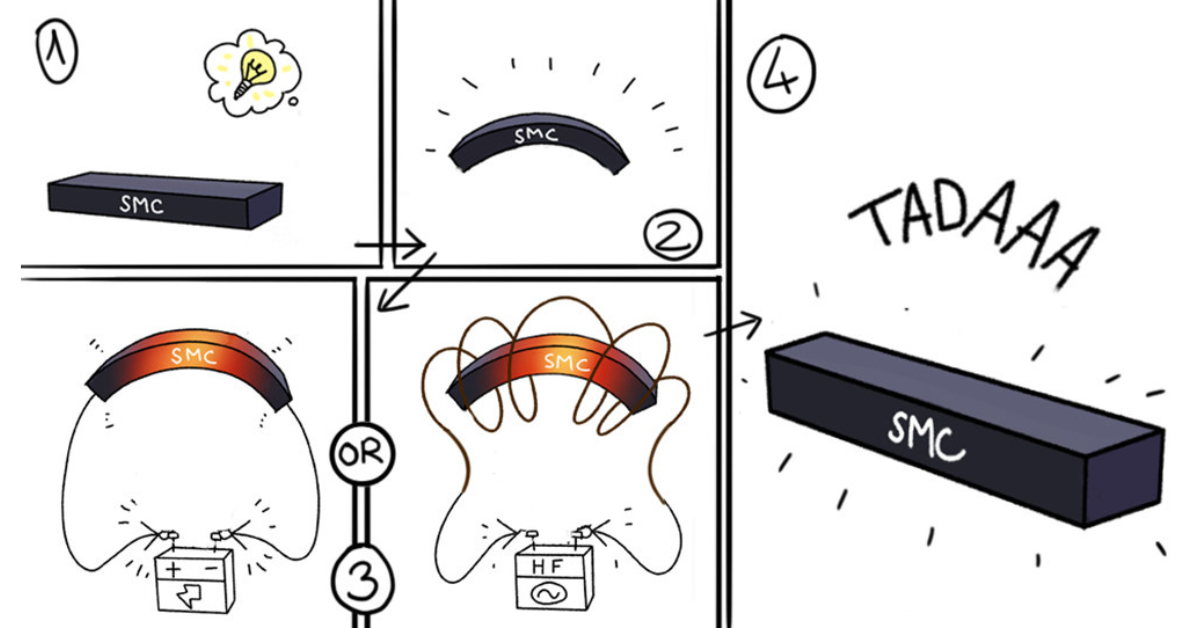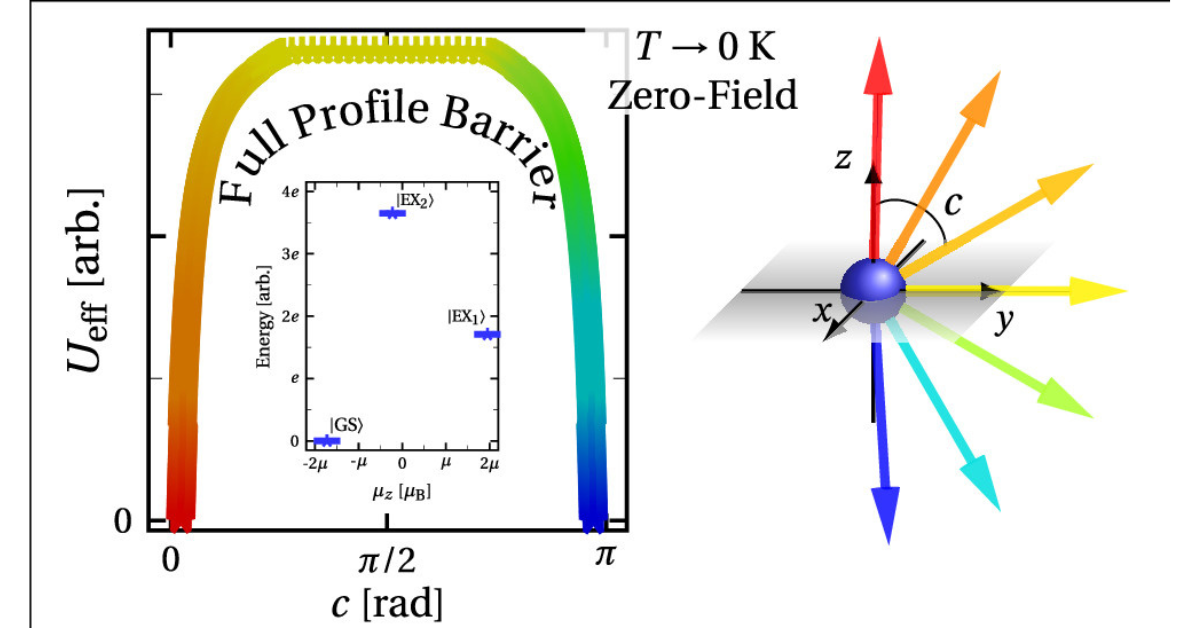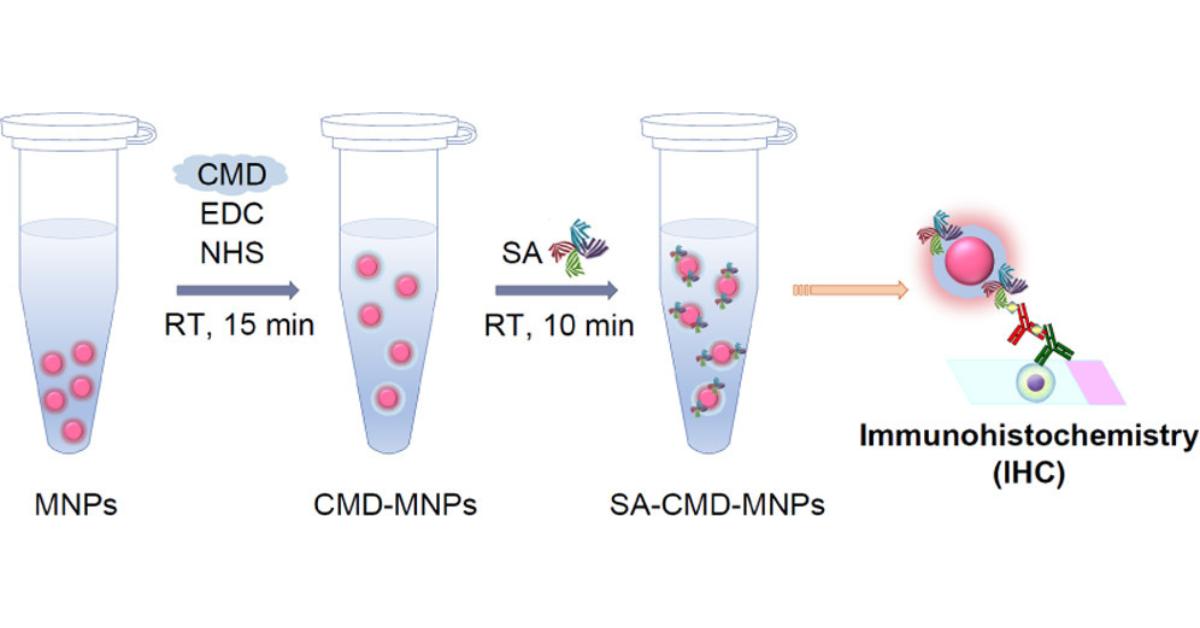What's New
ACS Omega Cover Art Marks International Day of Persons with Disabilities
To mark International Day of Persons with Disabilities, the November 29th issue of ACS Omega featured a special front cover created by Abdullahi Aborode, a Ph.D. student from Mississippi State University.
The artwork portrays the necessity to genuinely embrace inclusiveness for chemists with disabilities and sheds light on the need for total acceptance of disabled scientists irrespective of racial, health, or gender disparities so that they may thrive both mentally and socially. It also aims to draw attention to the many high-quality chemists worldwide who have been degraded due to their disabilities, and it is hoped that the artwork will encourage disabled chemists to see beyond their disabilities and continue to make critical contributions to the field.
ACS Omega - In The News
Alpha (α)-amino acid N-carboxyanhydrides (NCAs) are precursors for artificial polypeptides. However, this compound decomposes easily, making it difficult to obtain commercially. Therefore, it is necessary to synthesize the right quantity of α-amino acid NCAs at the location and time that they are required. NCAs are usually synthesized from plant-derived amino acids and phosgene. However, phosgene is extremely toxic and dangerous to use, leading to growing demand for new chemical compounds and reactions that can be substituted for it. Using the photo-on-demand phosgenation method that they previously developed, researchers at Kobe University's Graduate School of Science has succeeded in synthesizing NCA in a safe, inexpensive and simple manner from chloroform (a common organic solvent) and amino acid.
Reference: Akihiko Tsuda* et al. Photo-On-Demand Synthesis of α-Amino Acid N-Carboxyanhydrides with Chloroform, ACS Omega (2022), DOI: 10.1021/acsomega.2c05299
Along with bitterly cold temperatures, winter usually brings dry air and the occasional zap of static electricity. Those shocks might be annoying, but researchers are working to harness that otherwise wasted energy with triboelectric nanogenerators (TENGs) to power everyday devices. Now, in ACS Omega, a team from the University of Alabama in Huntsville describes a straightforward way to manufacture these tiny generators out of materials as simple as double-sided store-bought tape that pack in higher energy densities than previously reported versions.
Reference: Gang Wang* et al. Power Generation by a Double-Sided Tape, ACS Omega (2022), DOI: 10.1021/acsomega.2c05457
Key Journal Metrics
- ACS Omega published a new monthly record of 466 articles in November, for a total of 3,993 YTD. As compared to the equivalent timeframe in 2021, this represents a 27.2% increase in published output.
- Articles published by ACS Omega were downloaded a record 977,049 times in November, which brings total YTD usage up to 8,386,459. This represents a 28.1% increase in usage compared to the equivalent time period in 2021.
Published Issues
pp. 38105-39471
pp. 39472-40602
pp. 40603-41827
pp. 41828-42654
Featured Articles
Endo-Functionalized Cyclic Oligophenylenes: Synthesis and Complexation with a Chiral Phosphoric Acid
In our latest ACS Editors' Choice selection, the synthesis of endo-functionalized cyclic oligophenylenes in which adjacent benzene rings are perpendicular to one another is described. Annulation precursors, OH- or NH2-functionalized quinquephenyl diboronic acids, and septiphenyl dibromo compounds were systematically prepared by using a diprotected biphenyl-3,4′-diyl diboronic acid as a key compound. Four endo-functionalized cyclic oligophenylenes were synthesized by annulation of the precursors in dilute conditions through Suzuki–Miyaura cross-coupling.
Kosuke Ono* et al. Tokyo University of Science, Japan
ACS Omega 2022 (ASAP)
In this article, the authors present data on the metal content of 12 metals in 20 legal and 21 illegal cannabis vape liquids. The lead mass fraction in several illegal samples reached up to 50 μg g–1. High levels of nickel (max 677 μg g–1) and zinc (max 426 μg g–1) were found in illegal samples, whereas the highest copper content (485 μg g–1) was measured in legal samples. Significant differences in metal mass fractions were observed in the legal cannabis vape liquid taken from two identical devices, even though the liquid was from the same lot of the same cannabis product. Metal particles in the vape liquids were observed by scanning electron microscopy, and laser ablation inductively coupled plasma mass spectrometry confirmed the presence of copper-, zinc-, lead-, and manganese-bearing particles, metals that are in common alloys that may be used to make vape devices. These results suggest that metal particles could be a contributing factor to poor measurement precision and, for the first time, provide evidence of metal particles in cannabis vape liquids contained in unused cannabis vape pens.
Zuzana Gajdosechova* et al. National Research Council Canada and Health Canada, Canada
ACS Omega 2022, 7, 47, 42783–42792
A frugal humidity sensor that can detect changes in the humidity of exhaled breath of individuals has been fabricated. The sensor comprises a humidity-sensitive conducting polymer that is in situ formed on a cloth that acts as a substrate. Interdigitated silver electrodes were screen-printed on the modified cloth, and conducting threads connected the electrodes to the measurement circuit. The sensor’s response to changing humidity was measured as a voltage drop across the sensor using a microcontroller. The sensor was capable of discerning between fast, normal, and slow breathing based on the response time. A response time of ∼1.3 s was observed for fast breathing. An Android-based mobile application was designed to collect sensor data via Bluetooth for analysis. The sensor was later stitched onto a face mask, transforming it into a smart mask that can monitor changes in the breathing pattern at work, play, and sleep.
Boby George*, Thalappil Pradeep* et al. Indian Institute of Technology Chennai, India
ACS Omega 2022, 7, 47, 42926–42938
This review discusses the state of the art on these electro- and magnetoactive SMCs and summarizes recently published investigations, together with relevant applications in several fields. Special attention is paid to the shape memory characteristics (shape fixity and shape recovery or recovery force) of these materials, as well as to the magnitude of the electric and magnetic fields required to trigger the shape memory characteristics.
Clara Pereira Sánchez*, Christine Jérôme*, Ludovic Noels*, and Philippe Vanderbemden*, University of Liège, Belgium
ACS Omega 2022, 7, 45, 40701–40723
The present review presents the comprehensive state of the art in the topic of single-ion magnets possessing an eminent magnetization-reversal barrier, very slow magnetic relaxation and high blocking temperature. The authors focus their attention on the achievements in the synthesis of 3d and 4f single-ion magnets during the last two decades and discuss the observed magnetostructural properties underlying the anisotropy behavior and the ensuing remanence. Furthermore, they highlight the fundamental theoretical aspects to shed light on the complex behavior of these nanosized magnetic entities. In particular, they focus on key notions, such as zero-field splitting, anisotropy energy and quantum tunneling of the magnetization and their interdependence.
Miroslav Georgiev* and Hassan Chamati* Bulgarian Academy of Sciences, Bulgaria
ACS Omega 2022, 7, 47, 42664–42673
In this article, the authors developed a simple method for preparing highly dispersed, stable, and streptavidin (SA)-functionalized carboxymethyl dextran (CMD)-coated melamine nanoparticles (MNPs) in an aqueous buffer at neutral pH. Dynamic light scattering (DLS) revealed the agglomeration of MNPs in an aqueous buffer at neutral pH. When CMD, N-hydroxysuccinimide (NHS), and 1-ethyl-3-(3-dimethylaminopropyl) carbodiimide (EDC) were simultaneously mixed with the MNPs, CMD was bound to the MNPs, promoting their dispersibility. The performance of the SA-CMD-MNPs in biosensing was evaluated by immunohistochemistry, which revealed that the nanoparticles could specifically stain MCF-7 cells derived from breast cancer cells with low HER2 expression. This study provides an effective method for synthesizing highly dispersible nanoparticles for biosensing.
Yoshikazu Kurihara* et al. Konica Minolta, Inc., Japan
ACS Omega 2022, 7, 45, 41641–41650
Previous Newsletters
Click below to view a previous ACS Omega Monthly Update
© 2025 American Chemical Society, 1155 16th St NW, Washington, DC 20036, USA. View our Privacy Policy


